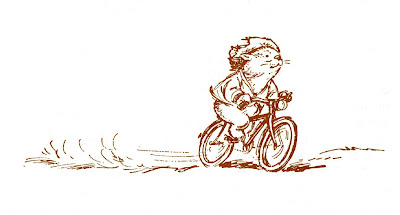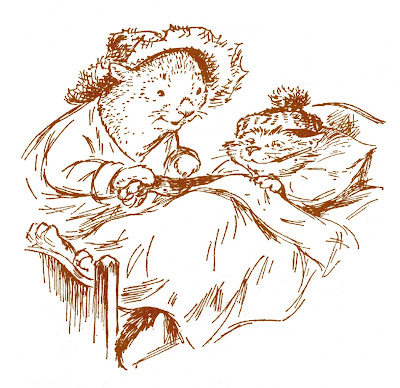"The Book came in seven weighty folio volumes with more than 3,000 pages and 250 plates of engravings covering all the religions known to Europeans in the early 1700s.
It was called 'Cérémonies et Coutumes Religieuses de tous les Peuples du Monde' [Religious Ceremonies and Customs of all the peoples of the world].
Published between 1723 and 1737, all its volumes bore the name of Bernard Picart, the most famous engraver of the 18th century after Hogarth, on whom Picart in fact had a direct influence. 'Religious Ceremonies' was published by Jean Frederic Bernard, who was also the unsung compiler, editor and author of this pioneering work on the world's religions.
The volumes began with Judaism and Catholicism, moved on to the Americas and India, then to Asia and Africa, only to return to the familiar, to the many forms of Protestantism, before finally tackling Islam. No other work before then had ever attempted, in word and image, such a grand sweep of human religions.
'Religious ceremonies' marked a major turning point in European attitudes toward religious belief and hence the sacred. It sowed the radical idea that religions could be compared on equal terms, and therefore that all religions were equally worthy of respect -- and criticism." [source]

Tableau des Principales Religions du Monde
FRONTISPIECE: "Representation of the main religions of the world; landscape with, in the foreground, group of Muslim men sitting around another one, standing and preaching; in the middleground, crowd gathered around the Roman Church, represented by a female figure wearing a tiara and holding an open book; she tramples underfoot a rabbi unrolling parchment with hebraic inscription, and a female figure in amour holding a Victory, representing the Roman Empire; an old woman with crown of thorns, personifying Superstition, grabs the Victory; on the left Christian Religion personified stands under a tree, with an open Bible a Franciscan monk is trying to close; in front of them, a priest baptizing a woman; in the background, scenes of pagan cults.." [source]

Les Free Massons
This curious print was engraved by I.F. after a drawing by Louis Fabrice du Bourg from information supplied by John Pine, a Masonic Lodge member and student of the book's overall illustration designer, Bernard Picart. That convoluted background seems appropriate not only because of the esoteric nature of Freemasonry itself, but because the central portrait high on the wall -
Sir Richard Steele - has been the subject of speculative analysis since the print was first published.
Research conducted over the last two hundred years has failed to prove whether or not Steele was in fact a member of a Masonic Lodge. His great claim to fame in the history of Freemasonry appears to be a couple of oblique references to the fraternity made in articles he wrote for the Tatler newspaper, which he had co-founded. For instance, from 1709:
"You see these accost each other with effeminate airs, they have their signs and tokens like Freemasons". This may well have been the first ever mention of the Freemasons in the British press.
For general background see:
"It represents in the foreground the Worshipful Master, his Wardens and Brethren, all in the costume of the early part of the last century; beyond them stretches a table in the shape of a square, and behind this table rises a high panelled wainscoting. The panel is divided into 129 smaller squares, on each of which appears a number, the copy of a tavern sign, and the name of the tavern in question. . . . . The plate is valuable as showing us the Masonic costume of the period, and curious as suggesting that Sir Richard Steele must have been a Freemason. It is indeed our only evidence on that point as, although many expressions in his writings might be held to confirm such a view, we have no record in lodge minutes, or members' lists, that such was the case."
[Bro. Speth, 1800s as quoth in 1919]

Siècle des Mexiquains
"A circular disc representing the various years and months within the Mexican Century [siècle]. The serpent that surrounds the circle marks out four different sections with its coils, and divides the circle into an upside-down compass. The North points down and is represented by the spearhead: Tecpatl; East is represented by a Cane: Acatl; West by a House: Cagli; and South by a rabbit: Tochtlila. There are 16 hieroglyphics equally distributed between each four sections." [source]
The illustration design is {'said to have been'} copied/adapted from one produced by
Theodore de
Bry in the late 16th century. It appears to be a faithful depiction of an Aztec calendar stone, fairly similar to artifacts uncovered in 1790
[previously]
Deuil des Femmes Greques à Rama
&
Baptême des Grecs dans le Jourdain
Greek women mourning at (?)Rama
&
Greek baptism in the river Jordan
(I confess to being confused by both the wording and imagery here. My first inclination is to wonder if 'Greek' is being misapplied; otherwise is it used as a stand-in/euphemism for 'little known peoples' or.. ?)

Diverses Pagodes où Penitences des Faquirs
Indian fakirs (or sadhus
*) perform penance rituals (physical contortion, austerity measures etc) at the site of various pagodas or temples
(my interpretation)Addit: immediately prior to posting this entry, I came across another, much larger version (
here) of this illustration which comes from Columbia University
Professor Frances Pritchett's
page on the Picard illustrations.

Ceremonie Nuptiale du Japon
&
Ceremonie Funebre du Japon
Japanese wedding and funeral ceremonies

Idoles Chinois
&
Les Dieux des Chinois
Chinese idols and Gods
Picard notes in the engravings that his source for the illustration was the Jesuits and that one of the pictures (at least!) was copied from Athanasius Kircher's
'China Monumentis' [previously]
Dgi-Guerdgi Albanois qui porte au Bezestein
des Foyes de Mouton pour nourrir les Chats
The Albanian Dgi-Guerdgi feeding cats in the
bazaar in Constantinople with sheep liver
One supposes this to be more of a cultural than ceremonial or religious example. It appears to have been copied from an engraving that appeared in the 1705 book called
'Recueil de cent Estampes Representant differentes Nations du Levant..' [see colour version and NYPL has all of the delightfully eccentric illustrations from that book] after the original painting by Jean-Baptiste Vanmour.

La Danse des Deruis
The whirling Dervish - a mystical Sufi practice (
posted previously), commonly performed in a
Mevlevi Sema ceremony in Turkey. This illustration also derives from the 1705
'..Levant..' book mentioned above.

Penitence des Juiſs Allemans dans leur Synagogue&
Grand Prêtre des Gaures ou Perses devant
le feu ayant à la main son rituel.
Trois Différentes Têtes de prêtres gaures
avec la mitre et la bouche couverte
-(these two images are not related)-
Penitence (penance?) of the German Jews in their Synagogue
&
Grand Priest performing a ritual and three different types of priest head covering. Perhaps related to Persians. [Anyone have an idea about who the Gaur(e)s are??
nb. ----> UPDATE: see first comment below]
 La Dedicace de la Sinagogue de Juiſs Portugais a Amsterdam
La Dedicace de la Sinagogue de Juiſs Portugais a AmsterdamThe dedication of the Portuguese
Synagogue in Amsterdam
"Sephardic Jews fleeing Spain and Portugal during the persecutions of the 16th and early 17th centuries settled in an eastern Amsterdam neighbourhood that became known as the Jewish Quarter. In light of the ongoing conflict between the Dutch Republic and Spain, the community referred to themselves as 'Portuguese Jews'."
The Synagogue (
the Esnoga) was completed in 1675 and was, at the time, the largest Synagogue in the world.
[As an aside, there's a
reference to Picard's having purposefully created two distinct styles of illustrating Jewish people as a means to critique the influx of Ashkenazi Jews into Amsterdam]

Temple du Japon ou il y a mille Idoles
The Japanese Temple of a thousand idols
(?) somehow became known as the Temple of 10,000 idols when this engraving was copied and widely circulated in the 19th century.

La communion des Lutheriens dans l'Eglise des Minorites à Augsbourg
Picard's engraving of a Lutheran communion ceremony inside the Church of Minorities in Augsburg is said to be after an original painting by the German artist, Caterine Sperling Heckel
(d. 1741).

Le Convoi Funbre.
Le Corps Expos dans le Choeur.
On jette L'Eau Benite sur le Corps apres qu'on la Descendu dan la Fosse.
"The Funeral Procession. The Body Shown in the Choir. Holy Water Sprinkled on the Body, Then It Is Lowered into the Grave. Three images depict aspects of religious ceremony associated with burial. The first is a formal procession with clergy and mourners carrying the coffin through the town. The second shows the coffin draped with a cloth emblazoned with the cross set in the church choir between rows of lighted candles. A cantor stands by the large choir book; clergy and mourners pray. The final image is of burial under the stone slab floor of the church. Clergy and mourners gather around; after holy water is sprinkled, the body is lowered into the grave. We see the dirt being shoveled back into the hole." [source]

(again, these are unrelated pages combined for presentation purposes)
The left panel has various Greek & Turkish bishops and priests and, inexplicably, a Greek fiancée on a "sopha"
The right panel shows people sentenced by the Inquisition: the two at the top confessed and avoided the fate of those below: being burnt alive

Left page: Indian Hindu Gods, Ixora (Ishvara) or Shiva, and his son Quenevadi (Ganapati) or Ganesha
Right page:
'Le Bairam ou la Paque des Mohametans'A traditional Mohammedan Feast (the end of Ramadan) in an Eastern City with men on swings above the crowded streets

Left page: Egyptian Gods Isis, Osiris and Horus
Right page:
Idoles de Campêche et de Iucatan; Idoles de Tabasco(Idols of Haiti and Mexico)
[click through on any image for a greatly enlarged version]
The University of Heidelberg presents 'Histoire Général des Cérémonies, Moeurs et Coutumes Religieuses de tous les Peuples du Monde: Représentées en 243 Figures' in seven volumes [click on a volume - Band - then anything below
'Inhalt' and then on
'Vorschau' to get thumbnail pages].
This is something of a bowdlerized 1741 version of the book series -
originally released between 1723 and 1737 - mentioned in the quote at the top of this entry. The revision (by Banier and Le Mascrier) did not alter the illustrations at all and the changes to the text hardly affected the enormous impact the series would have across Europe. The modifications tended to remove some satirical elements and factual errors and (predictably) introduced proclamations asserting the primacy of Catholicism over all other faiths and doctrines.


























































